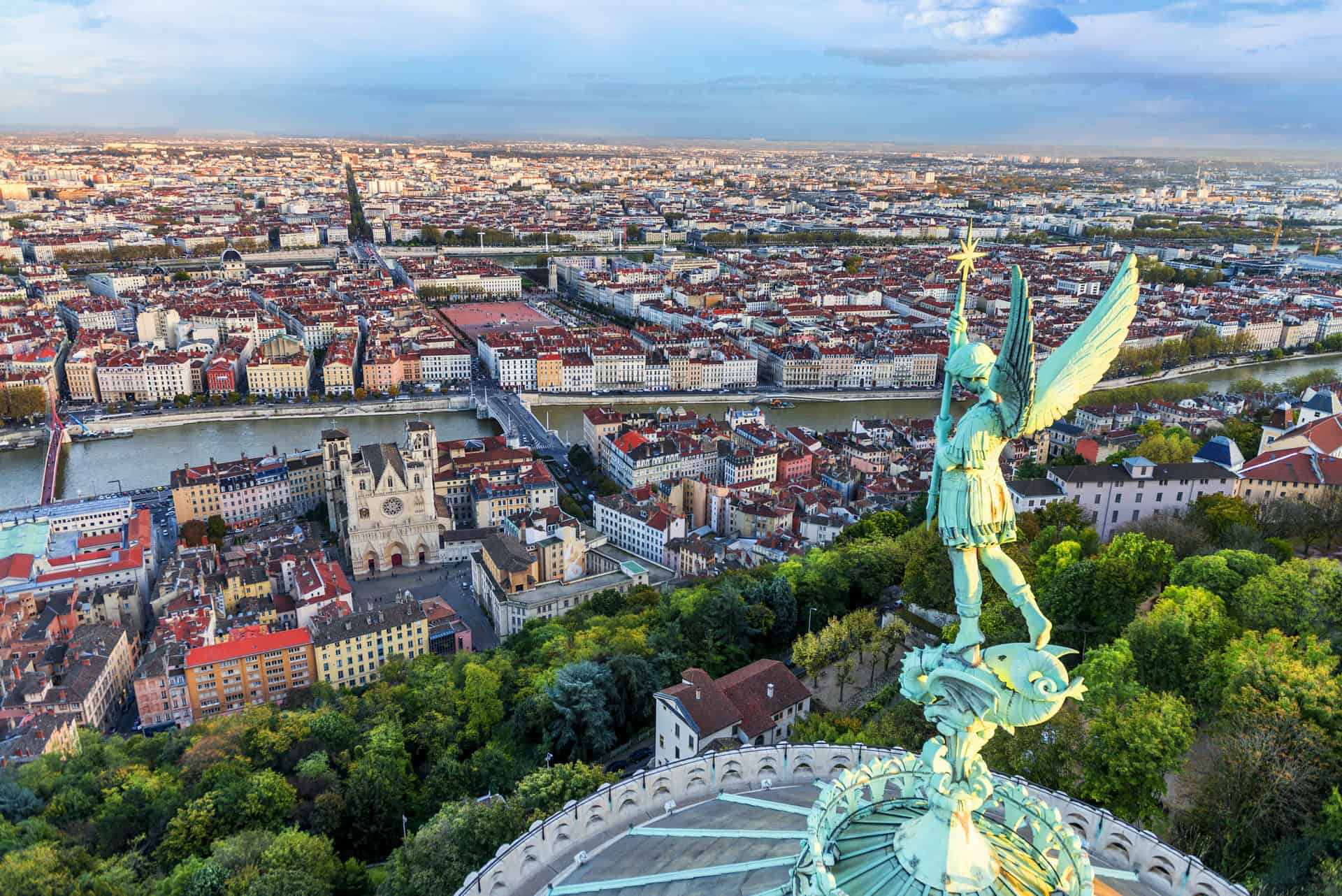The Wine Cellars of Moldova: Exploring the Subterranean Legacy!

Updated On: March 23, 2024 by Esraa Mahmoud
Moldova, a country nestled between Romania and Ukraine, may not be the first name that comes to mind when thinking of great wine destinations. Yet, this small nation boasts an extraordinary hidden gem beneath its soil: the labyrinth of the wine cellars of Moldova that extend like subterranean veins through the limestone bedrock. These underground networks are not just storage spaces; they form an entire world of wine, rich with history and tradition, waiting to be explored.
Winery tours in Moldova offer an experience, transporting visitors to an underground city where streets are named after the wines they store. Here, the past and present of viniculture intertwine as guests walk alongside rows of oak barrels and bottles cradled in the earth’s natural embrace. Two of the most remarkable wine cellars, Cricova and Mileștii Mici, serve as the heartbeats of this industry. Cricova invites wine lovers into a vast underground realm, while Mileștii Mici prides itself on holding the Guinness World Record for the largest wine collection in the world.
Historical Significance of Moldovan Wine

As we explore Moldova’s wine history depths, we uncover a rich tapestry of viticultural significance stretching back to ancient civilisations and evolving through tumultuous eras to establish Moldova’s prominence in oenology.
Ancient Beginnings with Greeks and Romans
Moldova’s winemaking heritage dates back to when Greek traders and Roman settlers recognised the region’s potential for vine cultivation. During this period, the foundational practices of viticulture were laid, capitalising on the favourable climatic conditions and fertile soils. Evidence of this ancient winemaking tradition is substantiated by discovering fossils of Vitis teutonica vine leaves near villages such as Naslavcia, indicating that grapes have been a part of the land’s fabric for millions of years.
The Russian Empire to the Soviet Union
Wine culture flourished under the Russian Empire, where Moldovan wine started gaining recognition for its quality. During the Soviet Union era, Moldova’s wine industry was significantly transformed, with large-scale production set in motion to cater to the massive demand from across the USSR member states. Following the dissolution of the Soviet Union and Moldova’s subsequent independence, the wine industry became a symbol of national pride and cultural identity. The wine cellars of Moldova, such as the limestone cellars of Mileştii Mici, stand today not only as the largest wine cellars in the world but also as guardians of history, embodying the centuries-old tradition of Moldovan viticulture.
Geography and Climate of Moldovan Wineries
In Moldova, the terroir is profoundly influenced by its geography and climate, specifically the Black Sea Basin and the topography of its hills and plains. It plays a crucial role in the country’s renowned winemaking tradition.
The Black Sea Basin
The Black Sea Basin significantly impacts Moldova’s climate, with its proximity contributing to the temperate winters and warm summers ideal for viticulture. This maritime influence ensures an extended growing season, allowing grapes to develop full flavours and the right balance of sugars and acids, essential for high-quality wine production.
Characteristics of Moldova’s Hills and Plains
Moldova’s landscape is characterised by gentle hills and expansive plains, creating microclimates and variations in soil composition. The hills provide excellent sun exposure and drainage, while the plains offer vast areas conducive to extensive vine cultivation. These geographical characteristics ensure Moldova’s capability to produce a variety of grapes and, thus, a diverse array of wines.
The World-Renowned Cricova Winery
Cricova Winery is not just a symbol of Moldova’s viticultural splendour but a subterranean wonder, extending a maze-like network deep beneath the earth. As we explore this celebrated winery, let’s venture through the miles of its tunnels and recollect the visits from world figures like Angela Merkel and Vladimir Putin.
The Tunnel Network
The labyrinth of underground tunnels at Cricova forms an intricate city of wine. Originally, these passages were limestone mines, but today, they store over 1.2 million bottles of fine wine. The Cricova winery boasts 120 kilometres of this underground complex, where exquisite vintages rest and mature at a constant temperature of about 12°C. Visitors to Cricova’s tunnels can witness this hidden world ascending as a top destination for wine connoisseurs.
Notable Guests from Angela Merkel to Vladimir Putin
Cricova’s reputation as a premier winery extends far beyond its expansive cellars to its roster of distinguished guests. The winery’s guestbook reads like a who’s who of the global stage, with names ranging from Angela Merkel to Vladimir Putin etched within its pages. These high-profile visits signify Cricova’s standing within diplomatic circles and affirm Moldova’s cultural richness and hospitality.
Mileștii Mici and the Guinness Record
Nestled deep within the rolling hills of Moldova lies a testament to winemaking tradition and architectural wonder, Mileștii Mici, renowned for holding the Guinness World Record for the largest wine collection in the world.
Housing the Largest Wine Collection
Mileștii Mici has become synonymous with excellent wine storage. The wine cellars house a staggering collection, reaching over 1.5 million bottles. This collection is vast and diverse, consisting of high-quality red, white, and dessert wines preserved and matured over decades. This immense assortment of wines earned Mileștii Mici the prestigious Guinness World Record, placing Moldova on the map as a significant site for wine connoisseurs and enthusiasts.
Exploring the Limestone Caves
The cellars are not just a repository for wines but also a marvel of natural and human-made creation. The limestone caves, which extend for over 55 kilometres, create an optimal environment for wine preservation due to their constant temperature and humidity levels. Out of this expanse, 120 kilometres are utilised for wine storage, making Mileștii Mici not just the holder of the largest wine collection but also the second-largest wine cellar globally. These galleries, developed from former lime mining operations, present an enthralling journey for visitors and historians alike.
Viniculture and Grape Varieties
In Moldova, viniculture is a craft steeped in rich history and biodiversity, featuring an array of grape varieties that contribute to its distinctive vintages.
The Art of Winemaking
Our winemaking process is a careful blend of traditional techniques and modern innovation. The cellars store and age various vintages, each bottle a testament to the skill and passion of our winemakers. Vintages are meticulously crafted, with attention to the subtle interplay between soil, climate, and grape that defines each wine’s character.
From Feteasca to Cabernet Sauvignon
Feteasca, including varieties like Feteasca Regala, is a semi-aromatic grape that offers a symphony of floral and citrus notes to the palate. As for the robust Cabernet Sauvignon’s deep flavours and complexity have found a unique expression in Moldova’s terroir. These and other varieties such as Pinot Noir contribute to Moldova’s reputation for producing a diverse range of high-quality wines.
The Art and Science of Aging Wine
Wine ageing is an art form and a scientific process that transforms the simple grape into complex flavours that can only be achieved with time. In the hidden world of Moldova’s wine cellars, two critical factors—temperature and humidity—are meticulously controlled to cultivate the perfect ageing conditions.
Temperature and Humidity Control
The constant battle in wine ageing is maintaining the ideal temperature and humidity levels. Wine thrives between 12-14°C and boasts a humidity level of 70-80%. Such precision prevents the cork from drying out and the wine from oxidising too quickly, ensuring the development of flavours and aromas that only time can bestow.
The Traditional Method of Sparkling Wine
When it comes to sparkling wine, the traditional method, méthode traditionnelle, is a testament to the intricate craft of winemaking. This age-old technique involves a secondary fermentation within the bottle, where wines like Moldova’s renowned sparklings develop their signature effervescence through careful ageing on the lees. This process can last for years and is fundamental to the wine’s ultimate bouquet and taste.
The Experience of Wine Tasting Tours

Embarking on a wine-tasting tour in Moldova’s cellars offers an enchanting journey through an underground world of history and flavour. Here, you will discover the intricate process of wine production and enjoy the unique opportunity to sample a selection of exquisite wines.
Guided Tastings and the Wine Bar
Guided tasting is an unparalleled way to explore a country’s culinary heritage, and the Moldovan wine cellars are no exception. These tours typically take you through labyrinthine tunnels, leading to an experience where expert sommeliers present you with an array of bottles of wine. You’re not merely sampling wines; you’re engaging in a story with each sip, noting the nuanced differences unique to each varietal. The experience often culminates at the wine bar, where you may leisurely savour additional selections, peruse the menu for a bottle to take home, or simply reflect on the tastes you’ve encountered.
Making Reservations and Planning Visits
To ensure your spot on a wine-tasting tour, it’s essential to make reservations in advance. Moldova’s wineries have varying schedules; some may require bookings weeks ahead, especially during peak tourist seasons. Before planning your visit, confirm the opening days and hours. This foresight allows you to synchronize your itinerary better, guaranteeing an immersive and educational tour highlighting Moldova’s best viniculture. Remember, each tour is a unique encounter – a symphony of history, taste, and tradition deep within the earth’s embrace.
Wine Collections and Storage Solutions

Moldova is home to an impressive array of privately owned and state-held wine collections safeguarded in labyrinthine underground cellars. Understanding the intricate storage solutions, specifically the role of constant humidity, is vital to preserving the quality and heritage of these vast enological treasures.
Private Collections and State-Owned Treasures
We find ourselves in a realm where private collectors and the state alike have amassed astonishing quantities of wine. The Mileștii Mici cellar is distinguished by holding over 2 million bottles of wine, a Guinness World Record. This monumental collection is safeguarded in an underground city, with wines cradled in rows stretching into the horizon. Among its jewels is the revered Golden Collection, which is venerated for the wine it contains and its historical significance and rarity. The Cricova’s cellars are also renowned and serve as a sanctuary for a significant array of wines, including those once belonging to Hermann Göring, enhancing its profile as a reservoir of history.
The Significance of Constant Humidity
The emphasis on constant humidity is paramount in the conversation about wine storage. It’s not merely a detail but the linchpin of appropriate wine preservation. The unique climatic conditions deep within Moldova’s soil gift these cellars with a steady humidity ideal for ageing. The cellars maintain an unwavering dampness, which is crucial for preventing cork deterioration and ensuring the longevity of the wines. These underground havens provide a stable environment where fluctuations in humidity are minimal, defending the cellars’ precious inhabitants from the ravages of time.
Moldova’s Role in the Global Wine Market
In recent years, Moldova has emerged as an important player in the global wine market, making a name for itself through a significant presence in export and attracting foreign visitors to its famed wine country.
Export and International Recognition
Moldova’s wine production has grown in quantity and quality, elevating the country’s status in international circles. The nation’s vineyards have historically focused on export, cementing partnerships across Europe and beyond. These efforts have garnered international recognition, with Moldovan wines winning numerous awards at prestigious competitions. The Moldovan presence at events like the Wine Paris & Vinexpo Paris 2024 highlights the strides taken on the world stage.
Moldova’s Wine Country for Global Visitors
Moldova beckons foreign visitors with its wine country, blending cultural immersion and vinous discovery. The country’s wine regions present a compelling draw, with tours of the world’s largest wine cellar in Moldova, a Guinness World Record holder, exemplifying the unique experiences. This hidden world entices oenophiles and novices alike, weaving together miles of underground tunnels into an oenological labyrinth that is as much historical as it is a gustatory delight.
Wine Tourism and Cultural Significance

Discover the enchanting subterranean world of Moldova’s wine cellars, a testament to the nation’s rich cultural fabric and burgeoning tourism sector. Nestled underground, these vast cellars store liquid treasure and offer an immersive experience of the Moldovan way of life.
Experiencing the Richness of Moldovan Culture
Underneath the soil of this picturesque land, visitors find themselves in the wine cities of Cricova and Mileștii Mici, where the legacy of winemaking intertwines with Moldovan history. These cellar labyrinths, just a stone’s throw from the capital city of Chișinău, are a key part of the cultural heritage, allowing guests a glimpse into the ancient practices that survive in today’s modern times. Touring these expansive tunnels filled with oak barrels, one uncovers the narratives of a Moldovan town that has evolved its wine-making prowess into a living museum, celebrating the nation’s longstanding love affair with viticulture.
Impact on Local and National Economy
The wine industry in Moldova is a significant contributor to both local and national economies. The presence of these unique wine cellars not only bolsters employment but also puts Moldova on the map as a pivotal destination for ecotourism. The influx of tourists, drawn by the allure of tasting sessions and the sheer scale of these underground marvels, brings in much-needed revenue and showcases Moldova as a noteworthy player on the global wine stage. We must appreciate how this sector enhances economic stability while allowing the world to partake in a truly Moldovan cultural experience.
Frequently Asked Questions
This section addresses the most common inquiries about Moldova’s underground wine cellars, a remarkable aspect of the country’s wine-making heritage.
What are the key features of Moldova’s largest underground wine cellars?
Moldova’s most expansive wine cellars boast countless kilometres of limestone tunnels, maintaining a consistent year-round temperature ideal for wine maturation. These underground labyrinths are lined with countless bottles and barrels, creating an impressive visual spectacle. The largest wine cellar in Moldova, Mileștii Mici, even designates ‘streets’ named after the wines they store.
How can one visit the extensive wine cellars located in Moldova?
Visitors usually pre-arrange tours to explore these underground wine cities, which can include wine tastings and food pairings. Accessibility varies among cellars, but the famed Cricova winery is known to accommodate guests with guided tours that can often be booked online or through a travel agent specialising in Moldovan journeys.
Which winery holds the largest wine collection in Moldova?
The world-renowned Mileștii Mici winery holds the largest wine collection in Moldova, claiming a spot in the Guinness World Records. With its vast underground city of wine, it’s a treasure trove for connoisseurs and casual drinkers alike. Their extensive wine city winds through an impressive network of tunnels.
How does the biggest wine cellar in Moldova compare to other large cellars around the world?
Moldova’s largest wine cellar, Mileștii Mici, is unrivalled in sheer scale. With over 200 kilometres of tunnelling and a colossal collection of wines, it far surpasses many of the world’s other large wine cellars.
What experiences do the underground wine cellars of Moldova offer tourists?
Visitors to these cellars can enjoy guided tours, where they will witness the grandeur of Moldovan winemaking tradition, fine-tune their palate during wine tastings, and even dine in underground restaurants. Some wineries, like Cricova, offer an insight into their rich histories and invite guests to explore collections that dignitaries have savoured.
Which Moldovan winery is renowned for having a sizable underground network?
The Cricova winery is famous for its sprawling subterranean network, extending 120 kilometres, where the streets are filled not with cars and pedestrians but with wine. This unique establishment provides a memorable experience, capturing the essence of Moldovan viticulture.






